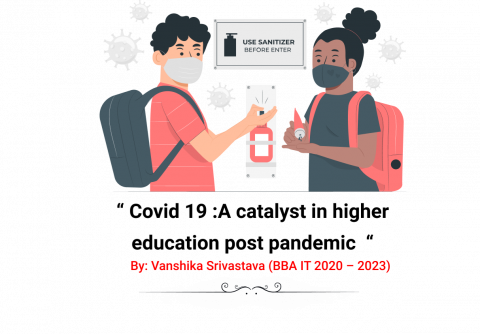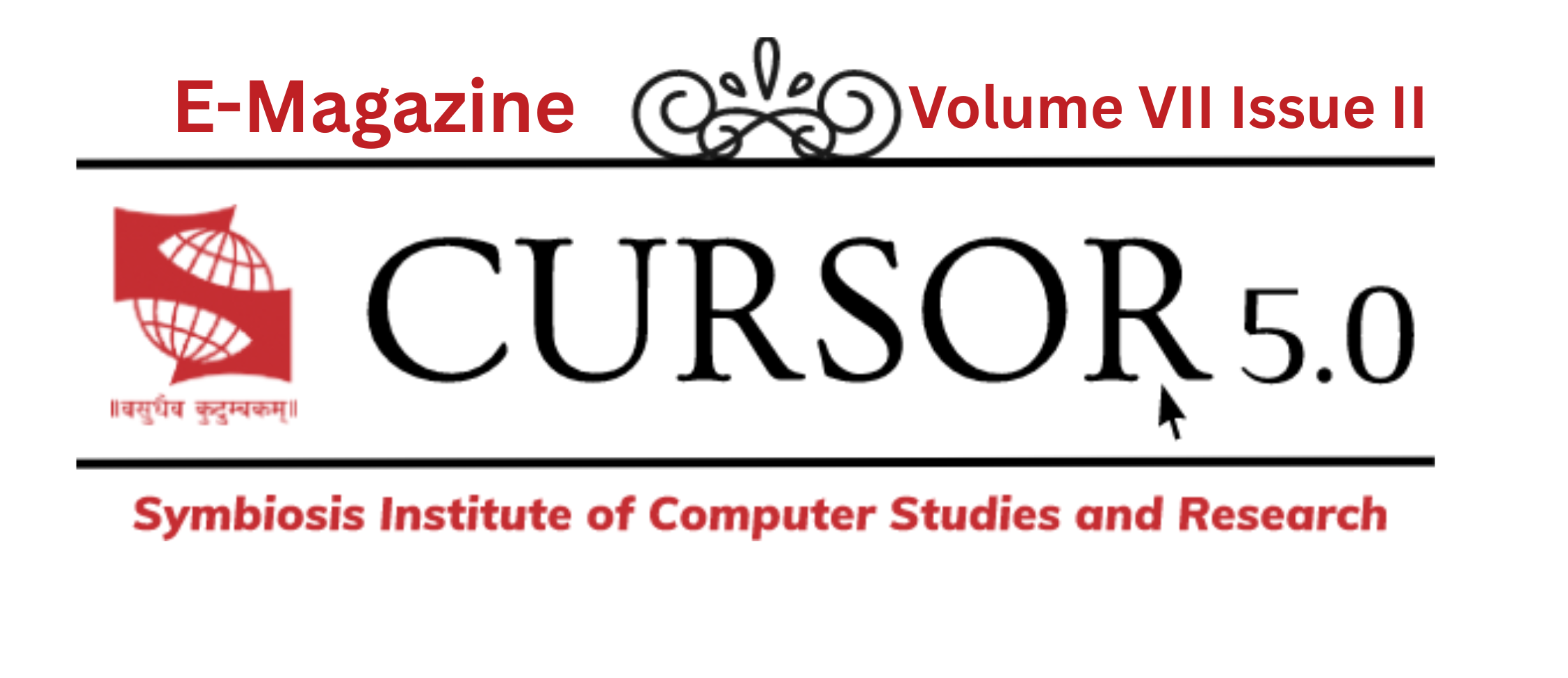
"The highest education is that which does not merely give us information but
makes our life in harmony with all existence."
-Rabindranath Tagore
Originated in the city of Wuhan, China, the coronavirus disease (Covid-19) pandemic spread to various countries and impacted the lives of many at a global level. Business and Education industries were affected majorly when lockdowns were announced worldwide as cases grew over time. They were compelled to shift to solutions that are technology-driven to follow the Covid 19 protocols. While the businesses have adapted to work-from-home (WFH) policies in the ongoing pandemic, around 1.5 billion students and youth across the world are or have been affected by closures of schools and universities. The following graph by UNESCO shows the effect of COVID-19 on global education.

Education is not the same anymore as it was years back when it originally began. Due to the pandemic, the education industry needed more innovation, and technology played a major role for all the officials, students, and teachers. Thanks to technology which helped us to stay connected as communication is an essence of our existence. In terms of education, creating content and deploying delivery systems, and harnessing a smooth flow of information are necessary. The education model that was being followed for past years has been rigid and reliant and therefore needs to crush the old model to become more flexible and accessible. Generation Z and Generation alpha are the current generation name, considered for most of the school students and technology is a part of their consciousness.
The unprecedented challenge interrupted the education industry at the fundamental level globally. Students couldn't apply to universities abroad. Without prior planning, there was a sudden shift to the online learning model. Talking about India particularly, it was a hectic task to formulate this method as the curriculum wasn’t devised for such a type of learning and teaching format. The greatest risk involved here is the drop in attention levels resulting in learners becoming passive learners. On top of that, a large proportion of the student population is facing a digital divide, and India being a developing nation portrays how the rural side remains untouched to opportunities and unknown to technology. There have been significant changes in admission practices, criteria, and the overall recruitment process which calls out for better and innovative mechanisms to the entire process.
It is often said that any change or transition that causes disruption is also likely to bring some new challenges and opportunities along with it. The revolution of the teaching and learning model of the higher education system worldwide and particularly in a country like India was exceptionally impressive and challenging. After the Universities and colleges shifted to an online model of learning, teachers were required to become more tech-savvy. They had the opportunity to enhance the quality of the learning material being provided by them to give better resource outcomes.
Now, when the vaccination drives are across the world, the focus of higher education authorities is shifting towards the post COVID methodologies that will be applied when students join back the institutions as education systems will never be the same as they were earlier and this opportunity must be seized to recalibrate, proactive and bring reforms in teaching methods.
According to the graph given below by the World Economic Forum report, even before COVID-19, there was already high growth and adoption in education technology, with global EdTech investments reaching US$18.66 billion in 2019 and the overall market for online education projected to reach $350 Billion by 2025.

The coming future of education will have no reason to overlook the need and role of utilization being played by technology as it may be the most effective plan of action to empower learning in all types of age groups that are looking forward to incorporating technology as a way and part of their daily lives. These generations carry the ability to influence education by way of various evaluations and evolutions, as they are the major part of the pandemic, and are living in the circumstances that will help them to grow and learn.
The ‘New Normal’ requires a new arrangement of learning called blended learning. Because there will be the involvement of learning systems and related management tools, it will bring about more receptivity and transparency in academics and therefore will be an advancement in the methods of designing and delivering quality content to the entire education system.
When we say blended learning, it refers to the amalgamation of eLearning tools along with in-human learning styles to reap the benefits of this combination. The expected result of the adopted approach will be assignments, projects, and school bags now lighter. Another advantage of blended learning will be the decrease in the future threats which might arise and attack the traditional outlook of teaching. Therefore, if in the future such a crisis arises, we will be prepared to safeguard the education industry with existing and planned alternatives.
E-Learning solutions along with smart technologies will ease out the tasks related to assessment like evaluation of answers, setting up question papers, preparing mark sheets, etc. This will not only save time and effort but will also allow the teachers to concentrate on more important tasks like improvement in teaching techniques, soft & digital skills, designing and enhancing more practical friendly course material. In the realm of pedagogy, the teachers, who were considered to be ‘knowledge givers are gradually changing roles and becoming ‘facilitators’ for the learners. Despite the technical and distance barriers faced by students, Governments across the globe are trying to bring new reforms of learning by providing open resource eLearning access to all students.
AI stands for Artificial Intelligence and is considered to be a gift in the digital learning world to human mankind. The advancement of technology and strategies makes learning more collaborative and engaging as compared to the traditional strategy. The reason being that AI can perform the repetitive and common tasks which were initially done by human beings, it impacts the world on a large scale. Teaching techniques will be impacted in a way that more time shall be spent on the crucial tasks. Also, AI can transform learning experiences.
The COVID-19 crisis brought uncertainty to the job market as well. There was a shortage of jobs, demand was low and supply was high. Therefore, to maintain agility and to keep up with surrounding technologies college students and professionals started to build skills in AI, data analytics, machine learning by the way of certifications so that they can be resourceful for a longer time. Workshops and other online training as part of EdTech products are in demand.
The pandemic also made students realize that soft skills are very well in need to survive in this unpredictable world. Decision making, creative problem solving, negotiating, communicating and self-awareness are a few of the many required skills. To ensure these skills are part of the priority list for all students, resilience must be generated into our educational systems. Apart from this, the pandemic made education authorities realize the importance of open-end resources and the distribution of knowledge despite the distance between countries and societies. Exploration of technology to its full potential can give amazing output, nourish the young minds and make them empowered citizens of this country.
Although most of the online education systems validated success globally, in India, E-learning would require time to develop before it is seen and adopted as a mainstream learning style and is functionally available to people. Higher education in India needs to be more open-sourced and collaborative at the international level. Most of the courses should be more flexible in terms of curriculum, should be innovative, self-reliant, socially responsible, and based on a practical approach instead of mugging up concepts on a theoretical basis. The current negative points need to be converted into future opportunities.
Target programs need to be organized and should include the most vulnerable children with equipment and connectivity. Digital curriculum and materials (digital libraries, lessons, learning items, etc.) should be made available to more and more learners across the country. To maximize the full potential of education, skills, and technology across the nation it is very necessary to decrease the digital divide and bring students to the same level of learning. The backbone of India must be strengthened for a better future of higher education.
Universities have a responsibility to consider their role in making our societies more equal – through access to higher education, curricula, and course content, and their operations and structures. Education post-Covid- 19 will acquire and derive the learnings from STEM and shall play a significant role on various issues.
Covid-19 may have been the catalyst for a revolutionary development that has been long pending. What is to be witnessed in the aftermath of a pandemic crisis is connected to the occurrences, innovations, and alternatives that are part of the experimental approach of education authorities and learning bodies
Perhaps, the world may never be the same as it was before Coronavirus but as it is said that every cloud has a silver lining, similarly we can count upon the futuristic changes and adapt to it irrespective of what it contains and accept the ‘New Normal’.
References:
• India Today Web Desk ,Covid-19 lockdown: How the pandemic bringing change in Indian education system, India ,May 4th, 2020 18:36 IST.
• Parija Rangnekar,How Will COVID-19 Impact The Future Of The Educational Sector? ,eLearning Industry, February 10th , 2021
• Joanna Newman, Slim Khalbous and Hilligje van’t Land, Higher education is key to building back better post-COVID, University World News.
• D Chandrasekharam in Dornadula C, Post Covid-19 education system, The Times of India, May 17, 2020, 10:04 PM IST
• UNESCO, Education in a post-COVID world: Nine ideas for public action, June 6th, 2020.
Illustrations By Tanishq Nakra



